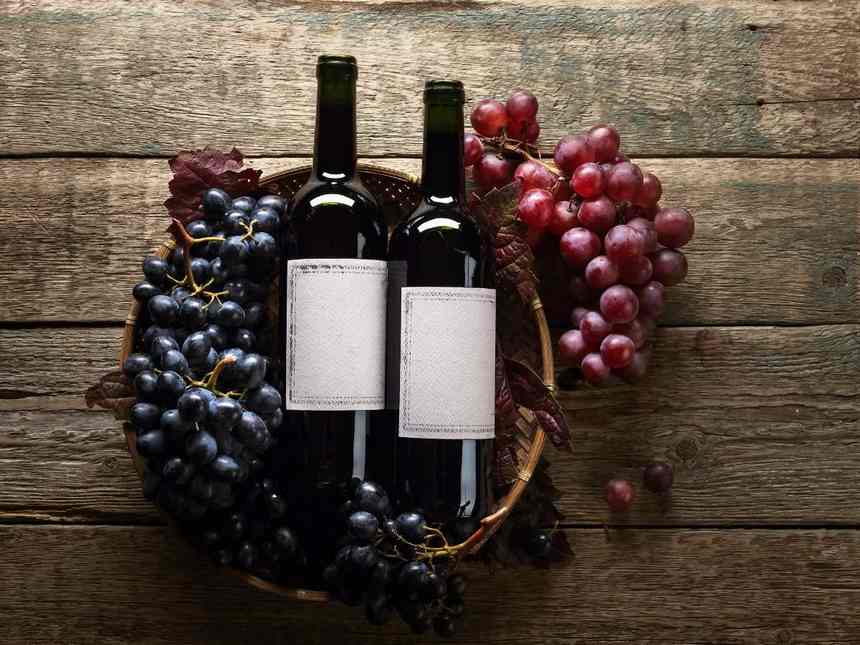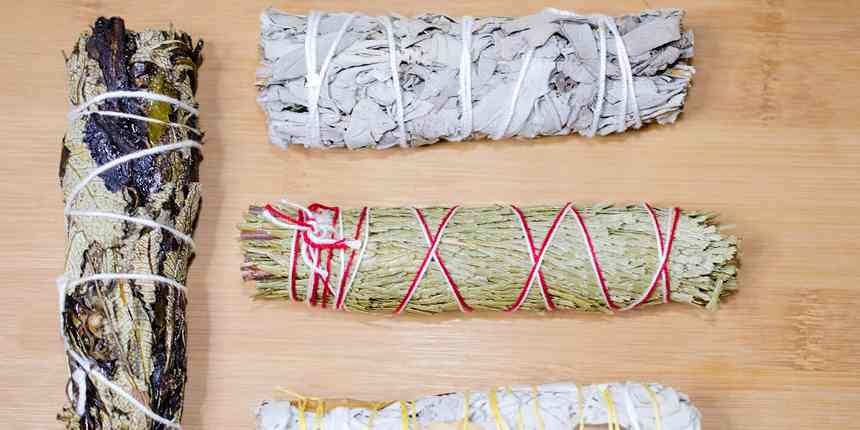While burning herbs for their smoke—a practice commonly known today as smudging—may seem like a new-age trend, the ritual actually originated centuries ago, with Indigenous People in North America. "This ritual features all four elements: water, Earth, fire, and air," explains Reiki master and Moodrie founder Jessie Quinn. "In traditional practices, a shell is used to represent water, the dried herbs (in Indigenous ceremonies, it consists of four sacred plants: sweetgrass, sage, tobacco, and cedar) represent Earth, the fire is represented when the herbs are lit, and the smoke that comes after the fire represents air." Additionally, Quinn says that an eagle feather is used to waft the smoke over a person or space.
 Credit: Steve Brennen / Getty Images
Credit: Steve Brennen / Getty Images
And while smudging is a practice that we can all benefit from, "it is important to recognize the colonization that has occurred with this ritual and honor its origins when incorporating it into one's own wellness regimen," Quinn adds. Ahead, ways to practice this ritual with honor and intention in your own home—including how to choose which herbs to burn.
Related: What Is Palo Santo and Why Do People Burn It?
Smudging has a myriad of benefits.
Smudging is intended to cleanse the energy inside and around you. "It can also be used as a form of protection," Quinn adds. Depending on the herb you select, you can introduce a specific type of energy into your ritual. "Some herbs provoke our senses in ways that provide added benefits," she continues. "For example, the smell of Palo Santo can spark creativity, so it's an excellent energy-clearing tool to use before working on a creative project or when you're feeling stuck."
There are many different types of smudge sticks to choose from.
Smudging can be done with an array of herbs that are either bundled together or come in stick form. "Regardless of your chosen medium, it is important to honor the plants by sourcing sustainably and ethically grown and harvested herbs for your intentional practice," explains Adora Winquist, an expert in aromatherapy and energy medicine. Winquist affirms that Palo Santo is a popular choice ("This native South American tree cleanses stagnant energy in the auric field and personal space, enhances connection to intuition, and increases a sense of groundedness," she says), as are sage (which clears patterns of negative thinking), sweet grass (most commonly used to bless marriages and childbirth and herald in love), and lavender (a must to clear spaces of "conflict and emotional upheaval," says Winquist).
Looking for more options? Consider cedar, Winquist continues. "This tree of strength and wisdom comes in many species and has a sweet, woodsy aroma. It's used for protection, prosperity, and to establish healthy boundaries in relationships," she explains, adding that Yerba Santa is best for those who regularly meditate, since it deepens this practice. The common denominator amongst all of the aforementioned herbs? They leave a potent smell in their wake—so for more delicate noses, Quinn recommends cinnamon. "I am a big fan of cinnamon because of its ability to replace negative energy with a positive and abundant one," she says. "When we think about ways we can create our own luck, burning a cinnamon stick is one of them—they literally bring in lucky energy."
Set an intention before you burn your herbs.
Establishing an intention is a key part of this ritual, say our experts. "When introducing the art of smudging into your personal environment, intention is paramount," Winquist says. "Begin with an intention of gratitude to the plants and the cultural connections that brought forth this wisdom and medicine that we all benefit from through a unified perspective." Next, she says to consider your desired benefit. Then, begin smudging.
Take care with your smudge stick—it’s technically a fire hazard.
Since smudging does require lighting herbs on fire, it's imperative to take care with the open flame. "I smudge in the safest way possible," Quinn says. "While some break off a few pieces of the dried herb and burn them, I don't like the flames." Quinn also never leaves her smudge stick burning like incense. "Instead, I light the end, waft my hand in front of it to kill the flame, and then I wave it like a wand around the item I am cleansing, which is sometimes my own body. Or, I move the energy in my space by cleansing each corner of a room." Once she's finished, she squashes the smoking herbs in either a ceramic dish, abalone shell, or ash tray.
If you have dogs, you might want to avoid smudging altogether.
While smudging can have great benefits for us humans, Quinn says that it can be harmful to our four-legged friends. "Sage is considered a nontoxic herb. It is safe for your dog to consume in their diet, but burning it around your pup is not a good idea," she shares. She advises opening a window shortly after you cleanse the space or keeping your pet in another room during your ritual. Burning sage for longer—like you would an incense—creates toxic smoke levels and can be harmful to your dog's lungs, she notes.










